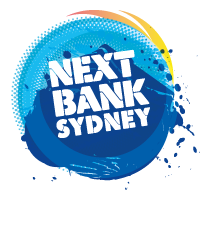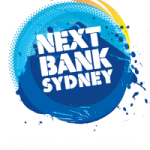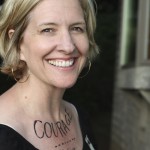
Firstly thanks to
Rob Findlay for organising this event, rob’s an ex-NAB boy who’s now living in Singapore and puts on next bank in his spare time.
Opher Yom-Tov, CCD, BT
Opening the event was
Opher Yom-tov who is head of customer centred design at BT and talked about the amazing things that they’ve done within the Westpac group using CCD.
Talking about why ccd is important opher called out the new threats to the incumbents in the australian financial services. We’re unlikely to be out resourced by the start-ups who are nibbling away at the market but at this point we are at threat of being out innovated. To illustrate this point Opher talked about what Banks typically do to deal with uncertainty, they:
- Hire smart people
- Use the best consultants
- Use tools of MBA, excel, risk models
- Teach people to think analytically and rationally
- Build business cases to prove if we can make money or not
- Refer to a senior person who acts as Nero and provided the thumbs up (or down) based on his/her opinion
Banks typically create ambitious 3-5 year roadmaps but focus on the near term when it comes to investments. They kill innovation by trying to prove the unprovable – this is the quickest way to stop a potentially great idea.
Opher displayed an
article that was written in 2001 and published in Business Week that proclaimed the business case for Apple opening it’s planned retail stores did not stack up. The article compared the profitability of Gateway retail stores and indicated that Apple would need to sell an inordinate amount of goods to pay for the prestigious locations and luxurious fit outs. Hindsight is a wonderful thing and the author must be kicking himself now that Apple can easily claim to have the most profitable retail spaces in the world.
A few case studies will not however persuade the powers that be to release funding for every new idea and this is where customer centred design (CCD) comes in to play. It improves the odds of success by approaching innovation by first understanding the people that will be impacted.
At it’s core CCD is about 3 things:
- Insight through empathy
- Experimentation – “Fail early to succeed sooner.” (David Kelly, founder of IDEO)
- Collaboration – “Gang up on the problem rather than each other” (Thomas Stallkamp, President Chrysler)
If you know that what you want to do will work then go straight to delivery and experiment with the how rather than the what.
Opher talked about how in the beginning BT focused on the process, for them it was -Capture, Create, Deliver. This is the typical process however it creates a linear mindset that does not allow for true innovation which does not work in this way. In relation to the business case Opher said that by testing with customers at every point it becomes cheaper and quicker to get good quality products and services to market. He also said that he believes the discipline should be called Human Centred Design as it’s not just about the end customer but rather everyone involved in the process from customer call centre staff, the partner of the end customer, the neighbour that they talk to at the BBQ etc.
BT did not stop with customer facing changes and have completed an exercise with their human resources department. They looked at what it is that makes people come to work and define and build the services based on this. One insight gleaned from this exercise was that people feel guilty for not spending enough time at home and were feeling rushed all the time. BT created “Home for Dinner” a service that enables staff to order either ready made meals or the raw ingredients and recipe to cook it themselves. Staff browse a website and choose their meal which is put together by suppliers who then deliver it to the mailroom ready for staff to collect when they leave for the day.
Customer centred design is not just about asking customers what they want. A famous Steve Jobs quote is “It’s really hard to design products by focus groups. A lot of times, people don’t know what they want until you show it to them.” It’s also about what’s right for the business and this is aided by the use of Quantitative Analysis in addition to the Qualitative Analysis that is fundamental to CCD. The whole process ensures that we encourage both a left and right brain view of the world.
Opher refers to the combination of skills and mindsets required as “Turtleneck meets Suit meets Pocket Protector. The teams involved need to have the ability to understand strategy, design thinking, lean six sigma, agile, lean startup, UX and data analytics. He also believes that it works best when merging internal and external consultants to form a hybrid approach.
One of the common myths around customer centred design is that it’s just about digital experiences which is simply not true. BT won a design award for “Your World”, a piece of paper with the customer in the center and some pointers to help financial planners start a deep conversation with their clients. The method had been proven to help the client know things about themselves that they would otherwise be unable to articulate. From a business point of view it has doubled case sizes and created a much richer experience for customers.
Touching on the number of people who should be involved in the process Opher cited a quote from David Ogilvg who said “In all the lands and all the cities, there are no statues of committees”. Teams should be small and the best people to solve banking problems are bankers (supported by other people of course!).
On type of problem, Opher referenced a 2 day workshop his team ran in conjunction with their private banking team to assist in designing the right space for them in their new building. Within this time they had been able to clearly articulate what would be the perfect space to ensure their clients would be comfortable and therefore more likely to want to come back. If anyone talks about CCD taking too long Opher retorts with a question on whether the person can afford not to take the time to do it.
From a change perspective Opher says it’s not joust about teaching people the proces. You need to start with inlightened and inspired leadership to enable this to happen. It’s also best to start by incubating in one business area – identify leaders who are willing to take the risk or who have experienced CCD before and understand the value. Across Westpac they are now seeing senior executives expecting the activity to be happening as part of the process rather than asking why it is being done.
Listening to Opher and talking to people from many other Banks across the world at the conference it became clear that everyone has already started on the CCD journey at it’s not a matter of if but when will we have true maturity in this discipline across all Banks.
Neal Cross, MasterCard Labs
I’ve known
Neal for several years now from when he used to work at Microsoft in a Sydney and it’s always great to hear what he has to say as he’s full of amazing ideas and to quote him he has “THE best job in the world” and is able to play with a load of new technology and enable his imagination to go wild.
Neal talked about his “Customer Centred Innovation Factories” that generate 1000 ideas a year and release 3 products to market. MasterCard need to do this quickly and efficiently in order to run in a cost efficient manner whilst still enabling innovation to occur. The factory is split into three distinct “machines”:
- Aspire – focussing on the generation of ideas and is essentially a crowd sourcing platform that is open to everyone in the company.
- Innovation Express – which tests the idea through prototyping internally and testing without talking to end customers.
- Commercialisation – a launch pad incubation process.
Neal talked about the need to leverage the whole company to drive innovation. There’s also a great ROI of the whole process and it channels a lot of staff enthusiasm and energy which helps to motivate people even more that they would normally be. One way of achieving this additional motivation is through a competition that Labs run which enables staff to win $250k, find the next big thing for MasterCard and have the option of a new role in the company.
Neal discussed the difference between model and mechanics and the need to separate the What from the How. The example was that of Kodak who helped their customers to save memories but the company became more attached to the how of film forgetting about what they were there to do.
Design for edge cases e.g. design for tech experts and for tech illiterates and you’ll create an experience that will be great for everyone in between. A great example is that of Oxo kitchen utensils, the designer watched his arthritic wife struggle with peeling vegetables and (rather than actually helping her to cut them…) created a peeler that had more grip on it so it was easier for her to hold – this was easier for everyone to hold. Mastercard are considering putting QKR into Google Glass to make the whole purchasing experience easier (for nerds?), maybe it will make it better for everyone, or maybe not.
Describing Innovation Express as a 48 hour hackathon where only the best people are taken to amazing locations and the CEO and directors judge the results. Neal said that they could give people longer but with a goal of presenting to the CEO people typically give it their all and produce amazing results in such a short time.
One of the great ideas to come out of Innovation Express is the concept of purchasing goods and services from within a digital magazine. Today you have to pop out of the magazine and go to another website if you want to make a purchase but this makes the whole experience seamless.
Neal wanted to use the process to solve a problem outside of the tech or payments space so he decided to try to save the orangutan. He flew an engineering team out to an area where Orangutans we’re protected and began by interviewing everyone involved in the eco-system (with the exception of the Orangutans unfortunately). It wasn’t clear how things progressed from there or if the Orangutans were actually saved but I’m sure Neal will share the outcome at one of his next talks.
Mastercard’s vision of 2020 is (obviously) one that involves payments and the opportunity to spend more money being integrated into everything we do. It’s both scary and extremely believable at the same time – I just hope that there are some people in 2020 without American accents…
Rocky Scopelliti, Telstra
Rocky talked us through the key insights found as a result of Telstra’s recent Digital Investor study. We are about to witness the greatest ever inter-generational wealth transfer over the next 20 years as Gen X and Y will shift from owning 36% of Australia’s wealth to 70%. We also are now seeing digital heirs (those who only know the world as being technologically enabled) starting to choose where and how to invest their money.
The concept of self-directed financial management is becoming an increasingly important aspect. This is especially apparent as we look at Self Managed Super Funds of which 71% are held by people from Gen X and Y. It’s also clear that on average SMSF’s have outperformed retail super funds so these self-directed investors must be doing something right.
Rocky talked about the research they had done on education of the self directed investors and found that the most effective method was a combination of three concepts:
- Educational videos
- Alert services
- Online collaboration with an expert
There was also further improvements (albeit less impactful) through the use of:
- Accessing experts on demand
- Intelligent assistants
A question was thrown by the audience about the expected uptake of “Robo planners”, a variant on intelligent assistant. Rocky believes that demand for these will explode in the next few years…
Keith Dodds, ThoughtWorks
Between 75-90% of global CEOs regard innovation as crucial to their business but less than half have a body or person devoted to it. Keith believes that innovation comes from a combination of Design Thinking and System Thinking and benefits from Continuous Design and Continuous Delivery.
Keith played a video from
Nordstrom innovation labs where they trial one idea a week. One of their simplest and most successful tries to solve the problem of buying expensive sunglasses in a store. You try a number of different pairs on but yet are unable to easily compare what you look like in each one at the same time. The concept simply involves taking photos of you wearing each pair to reduce the effort involved.
He then played a video of lastminute.com setting up a pop-up design studio in London in order to solicit greater feedback. The company gave feedback that they were able to solicit more feedback in one day than one month using other means.
We then saw a video of Stanard Chartered’s mobile virtual assistant called Zoe which leverages the Nina platform from Nuance. This assistant has been programmed to help you not just with your banking but everything from locating theatre tickets to booking flights for your next holiday.
Keith then showed us a video that showed the retail experience of the future, this contained similar themes to the MasterCard one but focused on the in store experience becoming one that is tailored around an individual with changing rooms that play music that you like which varies depending on what you’re actually trying on. The idea that the mirrors can read NFC tags in the clothes and display specific information is extremely believable and brings forward the idea that we will need fewer people to assist us when technology can do a more efficient job.
Keith then changed tact a little and began talking about the amount of data that we currently generate and is stored across the world. He showed aerial photographs of toe data centres in the US. One of them was the NSA data centre in Utah which has enough capacity to store all the data in the world for the next 100 years. Scary.
Louise Long – Head of Customer Experience Design, NAB
Louise titled her presentation “From noble to necessary (2007-2013). A story through notebooks.” Using the novel approach of using extracts from her notebooks to tell the story of customer centred design evolution at NAB.
Louise believes that great customer experience professionals are generalists, not specialists. Having held a dozen different roles across various parts of the experience value chain she believes that understanding the bigger picture is key to ensuring there is a great experience.
Customer experience design became a focus at NAB after an infamous 2 page letter was sent to customers that tried to explain changes to the credit card terms and conditions. The Bank was slammed for its awful use of language and frankly incoherent message.
Louise started by defining how it was that the Bank should communicate with customers. The Bank sent out over 2000 different types of letter to customers and before she started the excercuse there wasn’t even an inventory of these. In parallel to fixing all of the language in the letters NAB enabled a capability to store PDFs of every letter a customer receives in their online banking platform, these letters were also available to staff so that if a customer called up to query something in a letter the contact centre agent could see exactly the same thing as the customer.
Louise called out Credit Suisse for the great work they did with their customer immersion programme which involved senior leaders being put in the shoes of their customers so they could truly understand how they were feeling.
She created an interaction database that would enable the mapping of intended changes to the impact it would have on every part of the process and hence the customer. Whilst this ambitious project didn’t quite work it did spawn a mandate that every project needed to have a customer impact assessment before funding would be released.
Louise further accelerated the acceptance and adoption of customer-centricity by giving internal stakeholders the right questions to ask rather than the answers. she also encourages every person to spend some time working in the branches to understand what it is that customers (both internal and external) really want.
Louise ended with an answer to a question that asked how she effects change to a holistic customer experience when a bank is split into many different departments. She predicts that product managers will not exist in the future and instead experiences will be created by people who are focused on creating the best customer experience and will use features rather than products to do this.
Jin Zwicky – VP Experience Design, OCBC
Jin talked about simplicity as an organisational capability and described herself as a simplicity coach. Simplicity is based on a combination of a mental model and the knowledge required to understand it. The closer the two are the easier it is to use and therefore simple.
It is usually the gao between what the bank wants and what people need that creates complexity. Simplicity changes behaviour by building understanding which builds confidence. Confident (and presumably satisfied) customers are 100% more likely to spend (Gallup banking survey 2005)
Jim Marous – Bank Marketing Strategy Blog
Jim spoke of his Digital Banking Nirvana saying it should be Simple, Engaging and Contextual. He gave an example of a US bank who created their mobile account opening process so that a new customer could take a photo of the front and bank of their driving licence. This data was then sent to a bureau that looked up the licence and retrieved a whole load of data which was then used to prepopulate the account opening forms making it much simpler and easier for the customer.
He then showed an example of GoBank who allow their customers to see account balances before logging in to their mobile banking platform. This is extremely common now though and a small Australian financial services provider called CommBank implemented this some time ago. Swedbank took this function and tried to make it more engaging by having user shake their phone in order to see the balance.
USAA have implemented voice control of their mobile banking app but admit it has had low uptake. The reason for building it was however for a portion of their customer base (USAA is a bank for armed forces personnel) who have been injured in battle and may not be able to easily use a touch screen for banking.
GoBank also implemented a budget fortune teller feature which created a very informal way of making people think more about transactions before they made them . This is very similar to the Safe To Spend concept that a number of other banks have or are implementing.
Moven have a concept called cred which gamifies good financial behaviour and enables people to benchmark themselves against others and receive advice as to how they can improve.
Mbank have implemented a google like search of transaction history enabling customers to easily find what they are looking for.
Finally Jim played the video advertising Coin, a US company who are trying to make it possible for people to carry one card with them rather than a whole wallet full of plastic. It’s not EMV compatible and it won’t work anywhere outside of the US but it solves a short term customer problem and Coin are fine with that.
Duena Blomstrom, Meniga – Emotional Banking
Using a similar concept to Maslow’s hierarchy of needs banking interfaces are
- Pleasurable
- Usable
- Reliable
- Functional
One thing that banks forget to do is ensure that they remember to make the experience of banking pleasurable. As bankers we wear two hats, that of a banker but also of a consumer – we just don’t wear the latter enough.
Duena put forward the concept of happy and sad money. Happy money can become sad money when people make impulse purchases that they can’t afford. There’s also neutral money which is spent on things that are just the cost of living.
By defining your savings visually (by uploading a picture for example) it creates an association between emotion and a financial goal.
Are banks able to tell a story with transactions? Are they able to influence when we spend by playing on our emotions? Let’s see…
Ed Cortis, Head of Solution Delivery, Bankwest
Ed talked about the hackathons he has been running at Bankwest oer the last year. He started by covering the three different types of hackathon which he refers to as the Sprint, the 1500m and the Marathon.
The 48 hour hackathons are the sprints, Google’s 20% time is the marathon and variants such as Atlassian’s FedEx day are the 1500m. The latter is what many are saying is a more effective 20% time. Unfortunately because of all the hype about FedEx day FedEx wrote to Atlassian asking them to stop using their name so now it’s called ShipIt day.
Hackathons aren’t new though, 3M started it first in 1948 with their 15% time however they cancelled it three years later. They came up with some great innovations in that time though including Post-it-notes, Clear bandages and Masking tape.
Many companies around the world now do hackathons and in addition to those already mentioned Facebook and LinkedIn are advocates of the method. LinkedIn also use an incubator tagged on to the end of their hackathons to enable great ideas that don’t quite make it into production. The incubators go for between 30 and 90 days and have resulted in some of the great changes on the LinkedIn platform,
Back to Bankwest and they spend approximately 1600 hours of accumulated time every 3-4 months. The ROI on this has been calculated to be approximately 2 times the investment. Not only do they create hard financial benefits but the hackathons also help to catalyse the agile cultural change in the organisation. Bankwest have also seen their IT staff turnover drop from 12% to 7% since the hackathons were introduced (this happened at the same time as Activity Based Working though).
In terms of learnings, Ed said that the key thing was business engagement and the effort that was put in to organising the events was critical. The pitching of the ideas needs to be great too – if the hackathon teams don’t believe in the ideas then they won’t give it their all. The business are now so excited by the hackathons that they develop far more ideas than the teams are capable of delivering in a hackathon. The excitement led the the first Ninja hackathon where a business stakeholder whose idea did not make the cut bribed some of the teams to work on his idea anyway….
At Bankwest they wish every day could be a hack day.
 Firstly thanks to Rob Findlay for organising this event, rob’s an ex-NAB boy who’s now living in Singapore and puts on next bank in his spare time.
Firstly thanks to Rob Findlay for organising this event, rob’s an ex-NAB boy who’s now living in Singapore and puts on next bank in his spare time.


